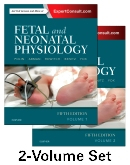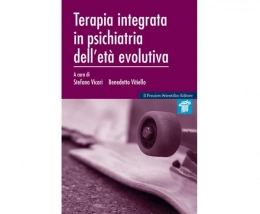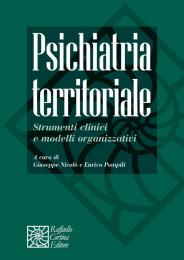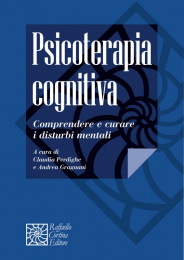Non ci sono recensioni
Fetal & Neonatal Physiology provides neonatologist fellows and physicians with the essential information they need to effectively diagnose, treat, and manage sick and premature infants. Fully comprehensive, this 2-volume resource continues to serve as an excellent reference tool, focusing on the basic science needed for exam preparation and the key information required for full-time practice.
The 5th edition is the most substantially updated and revised edition ever. In the 5 years since the last edition published, there have been thousands of publications on various aspects of development of health and disease; Fetal and Neonatal Physiology synthesizes this knowledge into definitive guidance for today's busy practitioner.
| Features: |
|
| New To This Edition: |
|
Section I - Genetics and Embryology
Section II - Placenta and Intrauterine Environment
Section III - Developmental Pharmacology and Pharmacokinetics
Section IV - Intrauterine and Postnatal Growth
Section V - Perinatal Iron, Mineral, and Vitamin Metabolism
Section VI - Lipid Metabolism
Section VII - Carbohydrate Metabolism
Section VIII - Protein Metabolism
Section IX - Thermoregulation
Section X - Skin
Section XI - Fetal and Neonatal Cardiovascular Physiology
Section XII - The Lung
Section XIII - Surfactant
Section XIV - Physiology of Gastrointestinal Tract in the Fetus and Neonate
Section XV - Liver and Bilirubin Metabolism
Section XVI - The Kidney
Section XVII - Fluid and Electrolyte Metabolism
Section XVIII - Developmental Hematopoiesis
Section XIX - Hemostasis
Section XX - Developmental Immunobiology
Section XXI - Neurology
Section XXII - Special Sensory Systems in the Fetus and Neonate
Section XXIII - Orthopedics
Section XXIV - Endocrine Function
Section XXV - Ovary and Testis
Section XXVI - Pathophysiology of Neonatal Diseases
- Basic Genetic Principles
- Prenatal Diagnosis
- Basic Embryology
- Regulation of Embryogenesis
- The Extracellular Matrix in Development
- Stem Cell Biology
- Apoptotic Cell Death
- Angiogenesis
- Epigenetics
- Placental Development
- Regulation of the Placental Circulation
- Mechanisms of Transfer Across the Human Placenta
- Endocrine and Paracrine Function of the Human Placenta
- Fetal and Maternal Responses to Intrauterine Infection
- Fetal Origins of Adult Disease: A Classic Hypothesis with New Relevance
- Physiologic Effects of Multiple Pregnancy on Mother and Fetus
- Placental function in intrauterine growth restriction
- Basic Pharmacologic Principles
- Principles of Pharmacokinetics
- Physicochemical and Structural Properties Regulating Placental Drug Transfer
- Pharmacogenetics
- Drug Distribution in Fetal Life
- Drug Transfer During Breastfeeding
- Circulatory and Metabolic Changes Accompanying Fetal Growth Restriction
- Endocrine Factors Affecting Neonatal Growth
- Human Milk Composition and Function in the Infant
- Physiology of Lactation
- Fetal and Neonatal Iron Metabolism
- Neonatal Calcium, Phosphorus, and Magnesium Homeostasis
- Zinc in the Fetus and Neonate
- Vitamin A Metabolism in the Fetus and Neonate
- Vitamin E Metabolism in the Fetus and Newborn Infant
- Vitamin K Metabolism in the Fetus and Neonate
- Maternal-Fetal Transfer of Lipid Metabolites
- Brown Adipose Tissue: Development and Function
- Lipids as an Energy Source for the Premature and Full-Term Neonate
- Ketone Body Production and Metabolism in the Fetus and Neonate
- Long-Chain Fatty Acids in the Developing Retina and Brain
- Metabolism of Glucose and Methods of Investigation in the Fetus and Newborn
- Carbohydrate Metabolism During Pregnancy
- Oxygen Consumption and General Carbohydrate Metabolism of the Fetus
- Role of Glucoregulatory Hormones in Hepatic Glucose Metabolism During the Perinatal Period
- Cell Glucose Transport and Glucose Handling During Fetal and Neonatal Development
- General Concepts of Protein Metabolism
- Fetal Requirements and Placental Transfer of Nitrogenous Compounds
- Temperature Control in Newborn Infants
- Responses of the Fetus and Neonate to Hypothermia
- Structure and Development of Skin and Cutaneous Appendages
- Physiologic Development of the Skin
- Cardiovascular Development
- Developmental Electrophysiology in the Fetus and Neonate
- Developmental Biology of the Pulmonary Vasculature
- Development of the Gastrointestinal Circulation in the Fetus and Newborn
- Physiology of Congenital Heart Disease in the Neonate
- Neural Regulation of Blood Pressure During Fetal and Newborn Life
- Developmental Effects on Fetal Circulation
- Mechanisms Regulating Closure of the Ductus Arteriosus
- Umbilical Circulation
- Fetal and Placental Circulation During Labor
- Physiology of Resuscitation
- Normal and Abnormal Structural Development of the Lung
- Regulation of Alveolarization
- Physiologic Mechanisms of Normal and Altered Lung Growth Before and After Birth
- Molecular Mechanisms of Lung Development and Lung Branching Morphogenesis
- Regulation of Liquid Secretion and Absorption by the Fetal and Neonatal Lung
- Upper Airway Structure: Function, Regulation, and Development
- Regulation of Lower Airway Function
- Functional Development of Respiratory Muscles
- Mechanics of Breathing
- Pulmonary Gas Exchange in the Developing Lung
- Oxygen Transport and Delivery
- Control of Breathing in Fetal Life and Onset and Control of Breathing in the Neonate
- Basic Mechanisms of Oxygen Sensing and Response to Hypoxia
- Evaluation of Pulmonary Function in the Neonate
- Mechanisms of Neonatal Lung Injury
- Impaired Lung Growth After Injury in Premature Lung
- Antenatal Factors That Influence Postnatal Lung Development and Injury
- Regulation of Pulmonary Circulation
- Historical Perspective
- Composition of Pulmonary Surfactant Lipids and Proteins
- Structure And Development of Alveolar Epithelial Cells
- Regulation of Surfactant-Associated Phospholipid Synthesis and Secretion
- Hormonal Therapy for Prevention of Respiratory Distress Syndrome
- Surfactant Treatment
- Genetics and Physiology of Surfactant Protein Deficiencies
- Trophic Factors and Regulation of Gastrointestinal Tract and Liver Development
- Organogenesis of the Gastrointestinal Tract
- Development of the Enteric Nervous System
- Development of Gastric Secretory Function
- Development of Gastrointestinal Motility
- Development of the Exocrine Pancreas
- Digestive-Absorption Functions in Fetuses, Infants, and Children
- Development of the Intestinal Microbiome
- Organogenesis and Histologic Development of the Liver
- Bile Acid Metabolism During Development
- Neonatal Bilirubin Metabolism
- Hereditary Contribution to Neonatal Hyperbilirubinemia
- Mechanisms of Action of Phototherapy for Neonatal Hyperbilirubinemia
- Embryogenesis and Anatomic Development of the Kidney
- Functional Development of the Kidney in Utero
- Development and Regulation of Renal Blood flow in the Neonate
- Development of the Renin-Angiotensin System
- Postnatal Development of Glomerular Filtration Rate in Neonates
- Renal Transport of Sodium During Early Development
- Potassium Homeostasis in the Fetus and Neonate
- Role of the Kidney in Calcium and Phosphorus Homeostasis
- Transport of Amino Acids in the Fetus and Neonate
- Developmental Aspects of Organic Acid Transport
- Concentration and Dilution of the Urine
- Development of Acidification Mechanisms in the Fetus and Neonate
- Response to Nephron Loss in Early Development
- Fluid Distribution in the Fetus and Neonate
- Regulation of Acid-Base Balance in the Fetus and Neonate
- Developmental Biology of Stem Cells: From the Embryo to the Adult
- Developmental Granulocytopoiesis
- Developmental Erythropoiesis
- Developmental Megakaryocytopoiesis
- Developmental Hemostasis
- Platelet–Vessel Wall Interactions
- Host Defense Mechanisms Against Bacteria
- Host-Fungi Interactions Relevant to the Newborn Infant
- Host Defense Mechanisms Against Viruses
- T-Cell Development
- B-Cell Development
- Mononuclear Phagocyte System
- Normal and Abnormal Neutrophil Physiology in the Newborn
- The Complement System of the Fetus and Newborn
- Cytokines and Inflammatory Response in the Fetus and Neonate
- Immunology of Human Milk and Host Immunity
- Neonatal Pulmonary Host Defense
- Development of the Nervous System
- Development of the Blood-Brain Barrier
- Trophic Factor and Nutritional and Hormonal Regulation of Brain Development
- Intraventricular Hemorrhage in the Neonate
- Cerebellar Development – an Impact of Preterm Birth and Co-Morbidities
- Electroencephalography in the Premature and Full-Term Infant
- Developmental Aspects of Pain
- Early Development of the Human Auditory System
- Development of Taste and Smell in the Neonate
- The Growth Plate: Embryologic Origin, Structure, and Function
- Ontogenesis of Striated Muscle
- Hypothalamus: Neuroendometabolic Center
- Growth Factor Regulation of Fetal Growth
- Growth Hormone in the Fetus and Newborn
- Luteinizing Hormone and Follicle-Stimulating Hormone Secretion in the Fetus and Newborn
- Development of the Corticotropin-Releasing Hormone–Corticotropin System in the Mammalian Fetus
- Fetal and Neonatal Adrenocortical Physiology
- Fetal and Neonatal Thyroid Physiology
- Genetics of Sex Determination and Differentiation
- Differentiation of the Ovary
- Testicular Development and Descent
- Pathophysiology of Neonatal sepsis
- Pathophysiology of Hypoglycemia in the Neonate
- Pathophysiology of Cardiomyopathies
- Pathophysiology of Persistent pulmonary hypertension of the newborn
- Pathophysiology of Shock in the Fetus and Neonate
- Pathophysiology of Apnea of Prematurity
- Pathophysiology of Respiratory Distress Syndrome
- Pathophysiology of Meconium Aspiration Syndrome
- Pathophysiology of Bronchopulmonary Dysplasia
- Pathophysiology of Ventilator Dependent Infants
- Pathophysiology of Gastroesophageal Reflux
- Pathophysiology of Neonatal Necrotizing Enterocolitis
- Pathophysiology of Kernicterus
- Pathophysiology of neonatal acute kidney injury
- Pathophysiology of Edema
- Pathophysiology of Retinopathy of Prematurity
- Pathophysiology of Hypoxic-ischemic Brain Injury
- Pathophysiology of Neonatal White Matter Injury
- Pathophysiology of Meningitis
- Pathophysiology of Neural Tube Defects
- Pathophysiology of Preeclampsia
- Pathophysiology of Preterm Birth
- Pathophysiology of Chorioamnionitis




